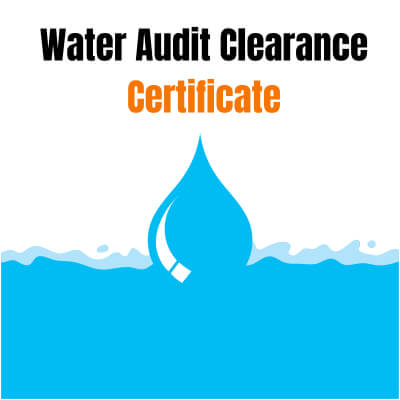
Water is a vital resource for all life on Earth, and it's more crucial than ever to use it wisely because of growing worries about environmental sustainability and water scarcity. A water audit is one efficient method to accomplish this. In this blog article, we'll go over what a water audit is and the detailed steps involved in carrying one out.
A water audit aims to find places where water is wasted or used inefficiently by conducting a methodical evaluation of water usage in a community, building, or facility. Organizations may minimize their water usage, cut expenses, and have a smaller environmental impact by knowing how water is used and where changes can be made.
Step 1: Preparation
Careful planning is the first step in performing a water audit. Obtaining pertinent data about the audited site entails obtaining water invoices, floor layouts, plumbing schematics, and any other supporting paperwork that may shed light on patterns of water usage. Determining the scope of the evaluation and establishing specific objectives for the audit are also crucial.
Step 2: Site Inspection
Conducting a thorough site examination is the next step after gathering the required data. In order to find possible causes of water waste or inefficiency, auditors look over all of the facility's water fixtures, machinery, and procedures during this phase. This covers all water-using appliances, such as faucets, showers, toilets, irrigation systems, and cooling towers. Additionally, auditors search for evidence of leaks, drips, or other types of water loss that can cause water to be used more than necessary.
Step 3: Data Collection
Once the site inspection is finished, auditors use a variety of techniques to gather data on water usage. This could entail tracking overall consumption by installing flow meters on water pipelines, tracking patterns and trends in water usage over time by tracking water usage, and monitoring water usage over a predetermined period of time. In order to learn more about staff members' habits and practices regarding water usage as well as any current water saving programs, auditors may also conduct staff interviews.
Step 4: Analysis
Auditors examine the data after it has been gathered to find inefficiencies and areas that could be improved. To ascertain if the facility is operating at an above- or below-average level in terms of water efficiency, this may entail evaluating current water usage against industry benchmarks. Additionally, auditors search for patterns or abnormalities in data related to water usage, which could point to locations where water-saving strategies should be applied. To further help measure the facility's water usage in relation to its size or output, auditors also compute water use intensity indicators like gallons per square foot or gallons per unit of production.
Step 5: Recommendations
Auditors create a list of suggestions for enhancing water efficiency based on the analysis's conclusions. These suggestions could include switching to water-saving fixtures like aerated faucets and low-flow toilets, fixing leaks or replacing outdated infrastructure, streamlining irrigation schedules to reduce water waste, installing water reuse systems to recycle wastewater for non-potable uses, or enacting behavioral modifications to encourage water conservation among employees and residents. It is imperative that the recommendations are customized to the unique requirements and limitations of the institution, accounting for variables such as financial limitations, regulatory mandates, and operational concerns.
Step 6: Implementation
It's time to put the recommendations into practice when they've been completed. This could entail collaborating with vendors, contractors, or maintenance personnel to complete upgrades, installs, or repairs. During the implementation phase, it is critical to monitor progress and provide clear deadlines and roles for each item. In order to guarantee that all parties involved are involved and dedicated to the success of the water efficiency measures, cooperation and communication are essential at this point.
Step 7: Monitoring and Evaluation
Continuous monitoring and assessment are essential to guaranteeing the efficacy of the water efficiency measures once the implementation phase is finished. This could entail tracking changes in use by routinely examining water bills, keeping an eye out for any new sources of waste or inefficiency with frequent inspections, and evaluating the effects of implemented recommendations by analyzing data on water usage. Further tweaks or enhancements could be performed if needed to further maximize savings and optimize water usage.
For Registration Visit: Water Audit
Organizations can detect and address inefficiencies in their water usage through proactive and economical water audits, which can ultimately result in cost savings, environmental advantages, and improved sustainability. Businesses can obtain important insights into their patterns of water usage and spot areas for improvement by implementing and monitoring a methodical process that includes preparation, site inspection, data collection, analysis, recommendations, and monitoring. Therefore, take into consideration performing a water audit for your business right now if you're worried about water conservation and want to have a good influence!





We are the pioneers in offering environmental consulting services to our patrons, giving us the first mover advantage & keeping us ahead of our competitors.
Very experienced in filing, monitoring & submission of CDSCO Compliances, Drugs Manufacturing & sale guidelines, Environmental Impact Assessment, AERB consulting services, Pollution Control Board CTE & CTO Advisory Services, Waste Management Authorization from State Pollution Control Boards, Fertilizers & Insecticides Manufacturing, Wholesale & Import Compliances
